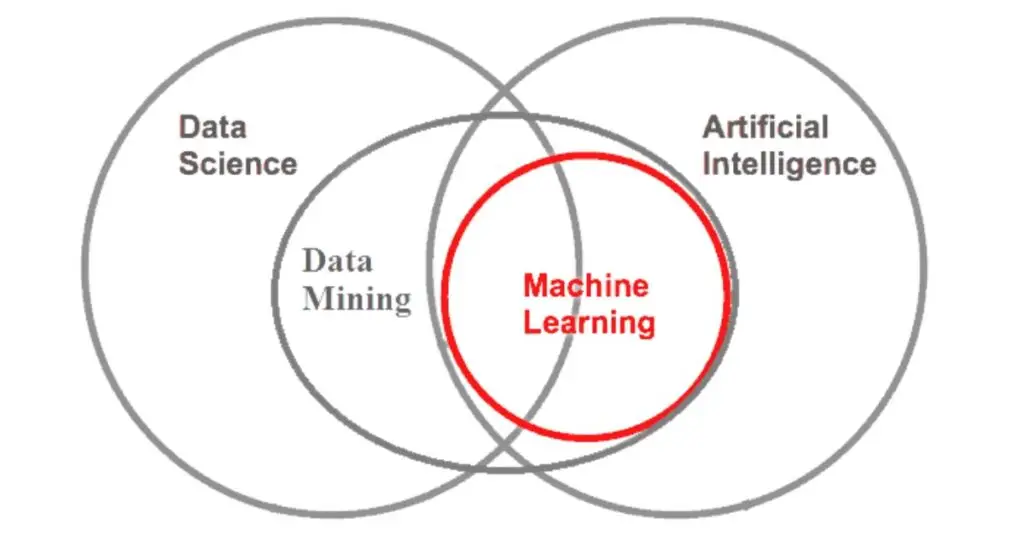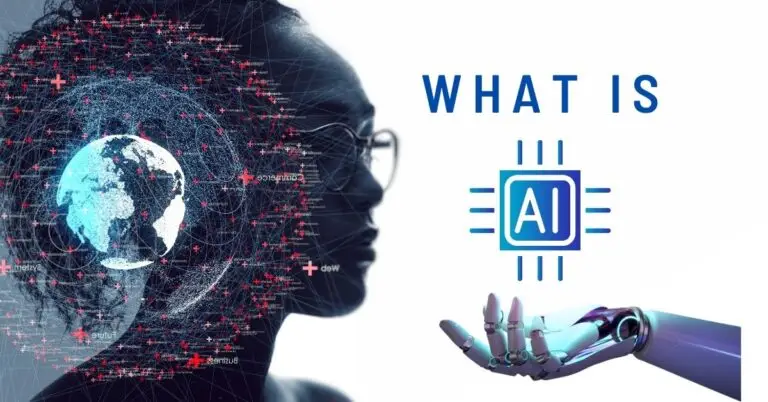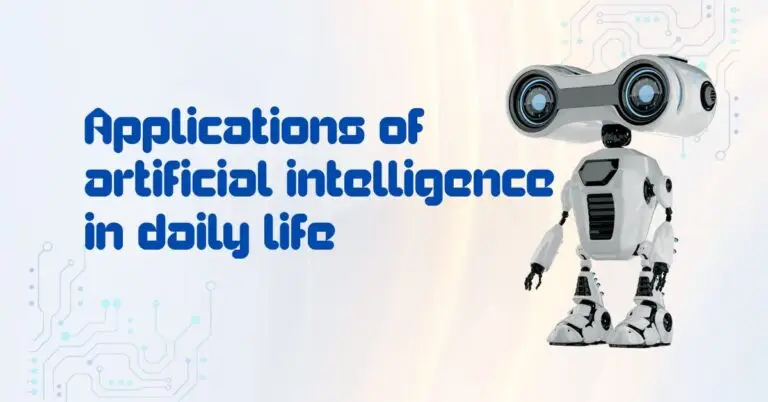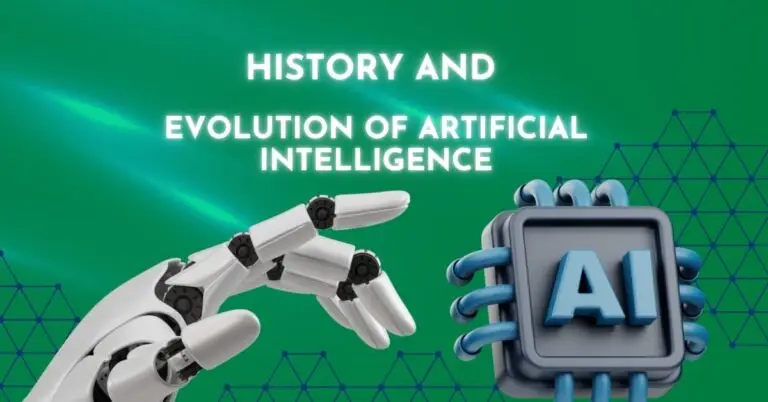Difference Between Artificial Intelligence and Machine Learning: Understand the key distinctions between AI and ML, their unique applications, and how they are transforming technology and industries. Discover why knowing the difference matters.
introduction
Artificial Intelligence (AI) and Machine Learning (ML) are two of the most transformative technologies of our time. While often used interchangeably, they have distinct differences that are crucial to understand.
In this blog post, we will delve into the unique characteristics of AI and ML, exploring their definitions, core concepts, and applications. By the end, you’ll have a clear understanding of how these technologies differ and why both are essential in advancing our technological future.
AI encompasses a broad range of technologies designed to mimic human intelligence, from simple rule-based systems to complex neural networks.
On the other hand, ML is a subset of AI that focuses on the ability of machines to learn from data and improve over time without being explicitly programmed.
Understanding these differences is key to leveraging their full potential in various fields, from healthcare to finance.
Stay tuned as we unravel the intricacies of AI and ML, shedding light on their strengths and how they complement each other in driving innovation.
Definition and Scope
Artificial Intelligence (AI)
Artificial Intelligence (AI) refers to the simulation of human intelligence in machines that are programmed to think and learn like humans. These systems can perform tasks that typically require human intelligence, such as visual perception, speech recognition, decision-making, and language translation.
Scope and Applications: AI encompasses a wide range of technologies and applications. It includes everything from simple rule-based systems to advanced neural networks. AI is used in various fields, including healthcare (e.g., diagnostic tools), finance (e.g., fraud detection), and customer service (e.g., chatbots). The scope of AI is vast, as it aims to create systems that can perform any intellectual task that a human can do.
Machine Learning (ML)
Machine Learning (ML) is a subset of AI that focuses on the development of algorithms that allow computers to learn from and make predictions based on data. Unlike traditional programming, where rules are explicitly coded, ML algorithms improve their performance as they are exposed to more data over time.
Scope and Applications: The scope of ML is more specific compared to AI. It involves various types of learning, such as supervised learning, unsupervised learning, and reinforcement learning. ML is widely used in applications like predictive analytics, image and speech recognition, and recommendation systems. For example, ML algorithms power the recommendation engines of platforms like Netflix and Amazon, helping to personalize user experiences based on past behavior.
By understanding the definitions and scopes of AI and ML, we can better appreciate their contributions to technology and how they work together to drive innovation.
Relationship Between AI and ML
Artificial Intelligence (AI) and Machine Learning (ML) are closely related, yet distinct concepts. Understanding their relationship is key to grasping their individual and combined potential.

AI as the Umbrella Term
AI is the broader concept that encompasses various technologies designed to simulate human intelligence. It includes a wide range of applications, from simple rule-based systems to complex neural networks.
AI aims to create systems that can perform tasks requiring human-like cognition, such as problem-solving, decision-making, and language understanding.
ML as a Subset of AI
Machine Learning is a subset of AI that focuses specifically on the development of algorithms that allow computers to learn from data.
Unlike traditional AI systems that rely on predefined rules, ML algorithms improve their performance over time as they are exposed to more data. This learning process enables ML systems to make predictions or decisions without being explicitly programmed for each task.
Complementary Technologies
While ML is a part of AI, not all AI involves ML. For example, rule-based systems and expert systems are forms of AI that do not use ML.
Conversely, ML can be used to enhance AI applications, making them more adaptive and efficient. For instance, ML algorithms can improve the accuracy of AI-powered virtual assistants by learning from user interactions.
Examples of AI Without ML
- Rule-Based Systems: These systems follow set rules to do tasks. A chatbot with scripted answers is an example.
- Expert Systems: These AI programs act like human experts in certain fields, like medical diagnosis.
Examples of ML Within AI
- Predictive Analytics: ML algorithms use past data to predict future events, like stock trends.
- Image and Speech Recognition: ML models learn from big datasets to recognize patterns in images and speech. This helps with facial recognition and voice assistants.
Understanding these technologies helps us see how they work together and innovate in many fields.
Core Concepts
It’s key to know the basics of Artificial Intelligence (AI) and Machine Learning (ML) to understand their uses. Here, we explain the main ideas behind these technologies.
AI Concepts
1. Cognitive Computing: This creates systems that think like humans. They use learning algorithms and data mining to mimic the brain.
2. Decision-Making Processes: AI systems make choices based on data. They analyze information and predict outcomes. This is important for self-driving cars and financial trading.
3. Natural Language Processing (NLP): NLP lets machines understand and respond to human language. It’s used in Siri, Alexa, and translation services.
ML Concepts
1. Algorithms and Models: Machine Learning uses algorithms to process data and create models. These models make predictions without being programmed for each task. Common algorithms include linear regression and neural networks.
2. Training Data and Learning Processes: ML models learn from data. The quality and amount of data affect their performance. They improve over time as they learn from data.
3. Types of Learning:
- Supervised Learning: In this, the model is trained on labeled data. It learns to map inputs to outputs based on examples. This is used for spam detection and image classification.
- Unsupervised Learning: Unsupervised learning trains the model on unlabeled data. It finds patterns and relationships without labels. This is useful for clustering and finding anomalies.
- Reinforcement Learning: In reinforcement learning, an agent learns by interacting with its environment. It receives feedback in the form of rewards or penalties. This is used in robotics and game playing.
Knowing these core concepts helps us see how AI and ML work and their potential to change many industries.
Techniques and Algorithms
It’s important to understand the techniques and algorithms of Artificial Intelligence (AI) and Machine Learning (ML). This helps us see how they function and their potential uses.
AI Techniques
1. Rule-Based Systems: These systems use set rules to make decisions. They are easy to set up but can’t learn from data. An example is an expert system for medical diagnosis, which follows rules based on medical knowledge.
2. Expert Systems: Expert systems mimic human decision-making in specific areas. They use knowledge bases and rules to solve complex problems, like diagnosing diseases or troubleshooting technical issues.
3. Neural Networks: Neural networks are algorithms that mimic the brain. They recognize patterns and interpret data through interconnected nodes or neurons. Neural networks are the base of many deep learning models.
ML Algorithms
1. Linear Regression: This algorithm predicts continuous values. It finds a linear equation that fits the data well.
2. Decision Trees: These are used for both classifying and predicting. They split data into subsets based on feature values. This makes the model easy to understand and see.
3. Support Vector Machines (SVM): SVMs are for classifying and predicting. They find the best line to separate data into classes. They work well in complex data spaces.
4. Naive Bayes: This is a classification algorithm based on Bayes’ theorem. It assumes features are independent, making it simple. It’s good for tasks like spam detection.
5. K-Means Clustering: K-means groups data into K clusters. Each point is in the closest cluster. It’s great for market segmentation and image compression.
6. Neural Networks (Deep Learning): Deep learning uses neural networks with many layers. These models learn complex patterns in big data. They’re used for image recognition and sequence data.
Knowing these techniques helps us see how AI and ML systems work. They solve complex problems in many fields.
Cases and Applications
AI and ML are used in many ways across different industries. These examples show how these technologies can change things.
AI Applications
1. Autonomous Vehicles: AI helps self-driving cars make decisions. They use AI to understand data, navigate, and make safe choices.
2. Virtual Assistants: AI virtual assistants like Siri and Alexa understand and answer questions. They can set reminders, play music, and give weather updates.
3. Healthcare: AI is changing healthcare. It helps with diagnosis, treatment, and personalized medicine. AI looks at medical images to find diseases early and predict outcomes.
4. Finance: AI is used in finance for fraud detection, risk management, and trading. AI checks transactions for fraud and makes trading decisions.
5. Customer Service: AI chatbots help with customer support 24/7. They use NLP to answer questions and solve problems.
ML Applications
1. Predictive Analytics: ML algorithms use past data to predict future events. They help in many areas, like stock market trends and customer behavior.
2. Image and Speech Recognition: ML models learn from big datasets to recognize images and speech. They power facial recognition, voice assistants, and transcription services.
3. Recommendation Systems: ML drives recommendation engines on Netflix, Amazon, and Spotify. These systems suggest content based on what users like.
4. Healthcare: In healthcare, ML helps with predictive analytics and personalized treatments. It can even find new drug candidates.
5. Marketing and Sales: ML boosts marketing by analyzing customer data. It helps in finding leads, segmenting customers, and creating personalized campaigns.
AI and ML are changing industries with their innovation and efficiency. Their uses are growing, making them key for the future.
Advantages and Limitations
Knowing the good and bad of AI and ML is key. It helps us use them well and know their limits.
Advantages of AI
1. Versatility in Problem-Solving: AI can solve many problems, from simple to complex. It’s great for tasks that need quick data processing.
2. Automation of Repetitive Tasks: AI automates boring tasks. This lets humans focus on creative and strategic work, boosting productivity.
3. Enhanced Decision-Making: AI analyzes data to help make better decisions. This is crucial in finance, healthcare, and logistics.
4. Continuous Improvement: AI gets better over time. It learns from more data, becoming more accurate and efficient.
Limitations of AI
1. High Computational Requirements: AI needs a lot of computing power. This can be expensive and bad for the environment.
2. Ethical and Societal Concerns: AI raises ethical issues like privacy and job loss. It’s important to address these concerns responsibly.
3. Lack of General Intelligence: AI can’t do things outside its programming. It lacks human-like understanding and reasoning.
Advantages of ML
1. Ability to Improve Over Time: ML models get better with more data. They’re great for tasks like fraud detection and recommendations.
2. Efficiency in Pattern Recognition: ML is excellent at finding patterns in data. It’s perfect for image and speech recognition, and predictive analytics.
3. Scalability: ML handles big data well. It can grow with data without losing performance.
Limitations of ML
1. Dependency on Data Quality and Quantity: ML’s success depends on good data. Bad data can lead to wrong predictions and biases.
2. Potential for Bias: ML can learn and show biases in data. This means we need to choose data carefully and check models for fairness.
3. Complexity and Interpretability: Some ML models are hard to understand. This can make them hard to use in important areas where clarity is needed.
By understanding AI and ML’s strengths and weaknesses, we can use them wisely. This helps us get the most out of them while avoiding risks.
Future Trends
The future of Artificial Intelligence (AI) and Machine Learning (ML) is exciting. These technologies will bring big changes to many fields. Here are some trends to look out for:
Emerging Trends in AI
1. Explainable AI (XAI): As AI gets more complex, we need to understand it better. Explainable AI helps us see why AI makes certain choices. This is key for trust and ethical use.
2. AI in Healthcare: AI will change healthcare a lot. It will help with personalized medicine, better predictions, and robotic surgery. AI tools will make diagnoses and treatments more accurate, helping patients more.
3. AI and Edge Computing: AI and edge computing work together to process data faster. This is great for things like self-driving cars and smart devices. It makes decisions quicker and more reliable.
4. AI for Climate Change: AI is helping tackle environmental issues. It can help save energy and predict disasters. AI is crucial in fighting climate change.
5. AI Ethics and Governance: As AI becomes more common, we’ll focus more on ethics and rules. It’s important to use AI in a fair and responsible way.
Emerging Trends in ML
1. Automated Machine Learning (AutoML): AutoML makes ML easier to use. It handles tasks like data prep and model selection. This makes ML available to more people.
2. Federated Learning: Federated learning trains models on many devices without sharing data. It’s good for keeping data safe in fields like healthcare and finance.
3. Reinforcement Learning (RL): RL helps solve tough problems by trying different things. It’s used in robotics, gaming, and more. It’s all about learning through trial and error.
4. Quantum Machine Learning: Mixing quantum computing with ML could solve big problems. It could lead to big breakthroughs in areas like cryptography and drug discovery.
5. ML in Natural Language Processing (NLP): NLP is getting better at understanding and making human language. This will make chatbots, translators, and content creators better.
Businesses and people should get ready for what’s coming. AI and ML will keep changing our world. They will bring new ideas and make life better.
Conclusion
Artificial Intelligence (AI) and Machine Learning (ML) are two of the most transformative technologies of our time. While they are often used interchangeably, understanding their differences is crucial for leveraging their full potential.
AI encompasses a broad range of technologies designed to mimic human intelligence, while ML is a subset of AI focused on learning from data and improving over time.
Throughout this blog post, we have explored the definitions, core concepts, techniques, and applications of AI and ML.
We have also discussed their advantages and limitations, as well as emerging trends that will shape their future. AI and ML are driving innovation across various industries, from healthcare and finance to autonomous vehicles and customer service.
As these technologies continue to evolve, they will undoubtedly play a pivotal role in solving complex problems and improving our quality of life.
By staying informed about the latest developments and understanding the fundamental differences between AI and ML, businesses and individuals can better prepare for the opportunities and challenges that lie ahead.






2 thoughts on “Difference Between Artificial intelligence and Machine learning”